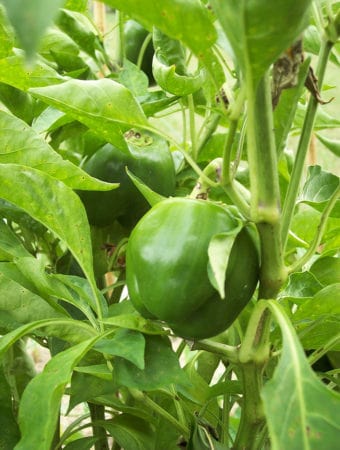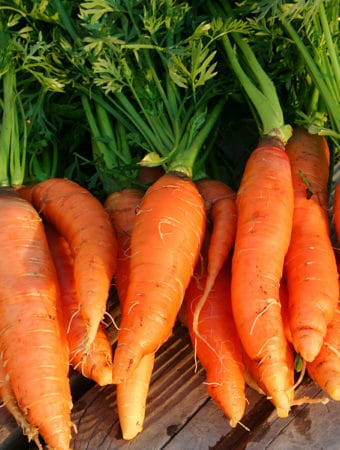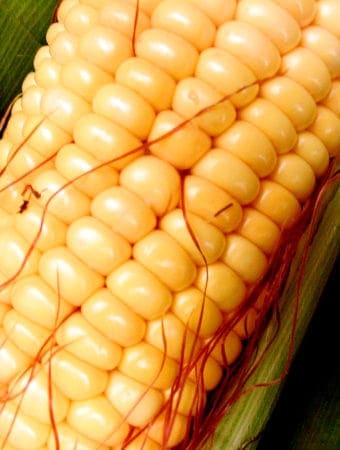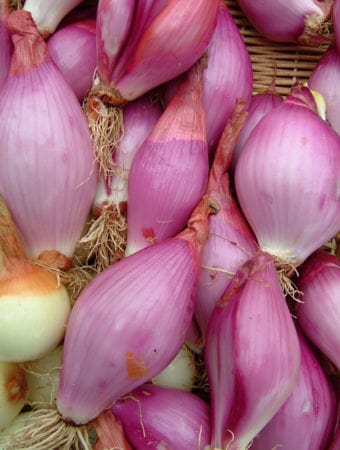Harvest tomatoes when the skin is slightly firm, shiny, and uniformly colored for the best flavor.
As a tomato ripens it will turn from a vibrant medium-green to a lighter shade, with faint pink or yellow stripes or flushing. Later the skin will mature to a uniform red or pink or yellow or white or green—depending on the variety.
How to know a tomato is ripe
The exact signs of tomato ripeness will vary from variety to variety.
- Harvest a tomato before its skin loses its waxy smoothness.
- Tomato flavor becomes more complex as the fruit ripens. Tomatoes ripen from the inside out.
- The optimal temperature range for tomato ripening is 68°F to 77°F (20°-25°C). Tomato ripening is slowed when temperatures are warmer or cooler than the optimum range. Tomatoes do not ripen at temperatures above 85°F (29°C).
- Green tomatoes that have reached three-fourths of their mature size can ripen off the vine. Place them in a paper bag with an apple or banana at room temperature out of direct sunlight; ethylene gas given off by the fruit will speed tomato ripening.
- If temperatures turn hot for an extended period, tomatoes on the vine will turn a yellowish-orange color and not be flavorful; in very hot regions, it is better to harvest tomatoes at the pink stage and ripen them at cooler temperatures indoors. More tips at How to Grow Tomatoes.
- In the fall when a frost or a freeze threatens, nearly mature green tomatoes can be picked and wrapped individually in newspaper and stored at room temperature in the dark until they ripen.
How to harvest a tomato
- Harvest tomatoes by cutting them from the vine with a garden pruner or sharp knife. Ripe tomatoes will often come off the vine with a simple twist. Don’t jerk or tug fruit from the vine.
How to store tomatoes
Store tomatoes at room temperature indoors (65°-70°F) or in a shady place outside. At room temperature, tomatoes will keep for 4 to 7 days.
- Don’t store or refrigerate tomatoes at temperatures below 55°F (13°C); this will cause flavor compounds to break down.
- Partially ripened tomatoes should not be refrigerated; refrigeration stops the ripening process.
- Ripe tomatoes that are refrigerated will lose their flavor and become overly soft.
- If tomatoes are refrigerated, put them in the crisper section of the refrigerator in a perforated plastic bag; the bag will keep the fruit from drying. Refrigerated tomatoes will lose color, firmness, and flavor.
- Tomatoes can be frozen, canned, or dried for future use. To freeze tomatoes, just wash them, cut out bad spots, and place them on a baking tray in the freezer. Once frozen, store tomatoes in plastic freezer bags until needed.
- Periodically check stored tomatoes to remove ripened fruit beginning to decay.
How to freeze tomatoes
You can freeze extra tomatoes for use in winter. Frozen tomatoes are best used in cooked dishes as freezing will cause them to lose their firmness. Here are two ways to freeze tomatoes:
- Place whole or peeled tomatoes in a plastic freezer bag and freeze. (To peel a tomato, place it in a strainer and pour boiling water over it for 5 seconds. The peel will pull away easily. You can also place a tomato in boiling water for 45 seconds, then plunge it in ice water for several seconds before peeling.) When ready to use, allow frozen tomatoes to come to room temperature.
- Tomato purée can also be frozen. Cook or steam tomatoes in a little water until soft. Mash the fruit through a press or wire strainer or whirl in a blender; add sugar and or lemon juice to taste; heat to boiling; chill and pack.
More tips: Tomato Ripening and Frost Coming
















